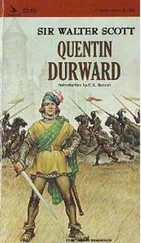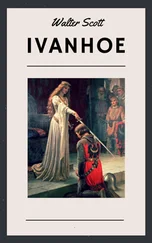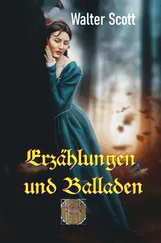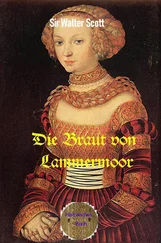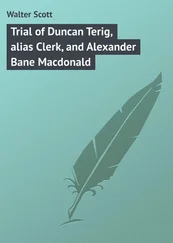Walter Scott - Letters on Demonology and Witchcraft
Здесь есть возможность читать онлайн «Walter Scott - Letters on Demonology and Witchcraft» весь текст электронной книги совершенно бесплатно (целиком полную версию без сокращений). В некоторых случаях можно слушать аудио, скачать через торрент в формате fb2 и присутствует краткое содержание. Жанр: История, на английском языке. Описание произведения, (предисловие) а так же отзывы посетителей доступны на портале библиотеки ЛибКат.
- Название:Letters on Demonology and Witchcraft
- Автор:
- Жанр:
- Год:неизвестен
- ISBN:нет данных
- Рейтинг книги:4 / 5. Голосов: 1
-
Избранное:Добавить в избранное
- Отзывы:
-
Ваша оценка:
- 80
- 1
- 2
- 3
- 4
- 5
Letters on Demonology and Witchcraft: краткое содержание, описание и аннотация
Предлагаем к чтению аннотацию, описание, краткое содержание или предисловие (зависит от того, что написал сам автор книги «Letters on Demonology and Witchcraft»). Если вы не нашли необходимую информацию о книге — напишите в комментариях, мы постараемся отыскать её.
Letters on Demonology and Witchcraft — читать онлайн бесплатно полную книгу (весь текст) целиком
Ниже представлен текст книги, разбитый по страницам. Система сохранения места последней прочитанной страницы, позволяет с удобством читать онлайн бесплатно книгу «Letters on Demonology and Witchcraft», без необходимости каждый раз заново искать на чём Вы остановились. Поставьте закладку, и сможете в любой момент перейти на страницу, на которой закончили чтение.
Интервал:
Закладка:
The two poor women last mentioned are the more to be pitied as, whether enthusiasts or impostors, they practised their supposed art exclusively for the advantage of mankind. The following extraordinary detail involves persons of far higher quality, and who sought to familiars for more baneful purposes.
Katherine Munro, Lady Fowlis, by birth Katherine Ross of Balnagowan, of high rank, both by her own family and that of her husband, who was the fifteenth Baron of Fowlis, and chief of the warlike clan of Munro, had a stepmother's quarrel with Robert Munro, eldest son of her husband, which she gratified by forming a scheme for compassing his death by unlawful arts. Her proposed advantage in this was, that the widow of Robert, when he was thus removed, should marry with her brother, George Ross of Balnagowan; and for this purpose, her sister-in-law, the present Lady Balnagowan, was also to be removed. Lady Fowlis, if the indictment had a syllable of truth, carried on her practices with the least possible disguise. She assembled persons of the lowest order, stamped with an infamous celebrity as witches; and, besides making pictures or models in clay, by which they hoped to bewitch Robert Munro and Lady Balnagowan, they brewed, upon one occasion, poison so strong that a page tasting of it immediately took sickness. Another earthen jar (Scotticè pig ) of the same deleterious liquor was prepared by the Lady Fowlis, and sent with her own nurse for the purpose of administering it to Robert Munro. The messenger having stumbled in the dark, broke the jar, and a rank grass grew on the spot where it fell, which sheep and cattle abhorred to touch; but the nurse, having less sense than the brute beasts, and tasting of the liquor which had been spilled, presently died. What is more to our present purpose, Lady Fowlis made use of the artillery of Elfland in order to destroy her stepson and sister-in-law. Laskie Loncart, one of the assistant hags, produced two of what the common people call elf-arrow heads, being, in fact, the points of flint used for arming the ends of arrow-shafts in the most ancient times, but accounted by the superstitious the weapons by which the fairies were wont to destroy both man and beast. The pictures of the intended victims were then set up at the north end of the apartment, and Christian Ross Malcolmson, an assistant hag, shot two shafts at the image of Lady Balnagowan, and three against the picture of Robert Munro, by which shots they were broken, and Lady Fowlis commanded new figures to be modelled. Many similar acts of witchcraft and of preparing poisons were alleged against Lady Fowlis.
Her son-in-law, Hector Munro, one of his stepmother's prosecutors, was, for reasons of his own, active in a similar conspiracy against the life of his own brother. The rites that he practised were of an uncouth, barbarous, and unusual nature. Hector, being taken ill, consulted on his case some of the witches or soothsayers, to whom this family appears to have been partial. The answer was unanimous that he must die unless the principal man of his blood should suffer death in his stead. It was agreed that the vicarious substitute for Hector must mean George Munro, brother to him by the half-blood (the son of the Katharine Lady Fowlis before commemorated). Hector sent at least seven messengers for this young man, refusing to receive any of his other friends till he saw the substitute whom he destined to take his place in the grave. When George at length arrived, Hector, by advice of a notorious witch, called Marion MacIngarach, and of his own foster-mother, Christian Neil Dalyell, received him with peculiar coldness and restraint. He did not speak for the space of an hour, till his brother broke silence and asked, "How he did?" Hector replied, "That he was the better George had come to visit him," and relapsed into silence, which seemed singular when compared with the anxiety he had displayed to see his brother; but it was, it seems, a necessary part of the spell. After midnight the sorceress Marion MacIngarach, the chief priestess or Nicneven of the company, went forth with her accomplices, carrying spades with them. They then proceeded to dig a grave not far from the seaside, upon a piece of land which formed the boundary betwixt two proprietors. The grave was made as nearly as possible to the size of their patient Hector Munro, the earth dug out of the grave being laid aside for the time. After ascertaining that the operation of the charm on George Munro, the destined victim, should be suspended for a time, to avoid suspicion, the conspirators proceeded to work their spell in a singular, impressive, and, I believe, unique manner. The time being January, 1588, the patient, Hector Munro, was borne forth in a pair of blankets, accompanied with all who were entrusted with the secret, who were warned to be strictly silent till the chief sorceress should have received her information from the angel whom they served. Hector Munro was carried to his grave and laid therein, the earth being filled in on him, and the grave secured with stakes as at a real funeral. Marion MacIngarach, the Hecate of the night, then sat down by the grave, while Christian Neil Dalyell, the foster-mother, ran the breadth of about nine ridges distant, leading a boy in her hand, and, coming again to the grave where Hector Munro was interred alive, demanded of the witch which victim she would choose, who replied that she chose Hector to live and George to die in his stead. This form of incantation was thrice repeated ere Mr. Hector was removed from his chilling bed in a January grave and carried home, all remaining mute as before. The consequence of a process which seems ill-adapted to produce the former effect was that Hector Munro recovered, and after the intervention of twelve months George Munro, his brother, died. Hector took the principal witch into high favour, made her keeper of his sheep, and evaded, it is said, to present her to trial when charged at Aberdeen to produce her. Though one or two inferior persons suffered death on account of the sorceries practised in the house of Fowlis, the Lady Katharine and her stepson Hector had both the unusual good fortune to be found not guilty. Mr. Pitcairn remarks that the juries, being composed of subordinate persons not suitable to the rank or family of the person tried, has all the appearance of having been packed on purpose for acquittal. It might also, in some interval of good sense, creep into the heads of Hector Munro's assize that the enchantment being performed in January, 1588, and the deceased being only taken ill of his fatal disease in April, 1590, the distance between the events might seem too great to admit the former being regarded as the cause of the latter. [35] [35] Pitcairn's "Trials," vol. i. pp. 191-201.
Another instance of the skill of a sorcerer being traced to the instructions of the elves is found in the confession of John Stewart, called a vagabond, but professing skill in palmistry and jugglery, and accused of having assisted Margaret Barclay, or Dein, to sink or cast away a vessel belonging to her own good brother. It being demanded of him by what means he professed himself to have knowledge of things to come, the said John confessed that the space of twenty-six years ago, he being travelling on All-Hallow Even night, between the towns of Monygoif (so spelled) and Clary, in Galway, he met with the King of the Fairies and his company, and that the King of the Fairies gave him a stroke with a white rod over the forehead, which took from him the power of speech and the use of one eye, which he wanted for the space of three years. He declared that the use of speech and eyesight was restored to him by the King of Fairies and his company, on an Hallowe'en night, at the town of Dublin, in Ireland, and that since that time he had joined these people every Saturday at seven o'clock, and remained with them all the night; also, that they met every Hallow-tide, sometimes on Lanark Hill (Tintock, perhaps), sometimes on Kilmaurs Hill, and that he was then taught by them. He pointed out the spot of his forehead on which, he said, the King of the Fairies struck him with a white rod, whereupon the prisoner, being blindfolded, they pricked the spot with a large pin, whereof he expressed no sense or feeling. He made the usual declaration, that he had seen many persons at the Court of Fairy, whose names he rehearsed particularly, and declared that all such persons as are taken away by sudden death go with the King of Elfland. With this man's evidence we have at present no more to do, though we may revert to the execrable proceedings which then took place against this miserable juggler and the poor women who were accused of the same crime. At present it is quoted as another instance of a fortune-teller referring to Elfland as the source of his knowledge.
Читать дальшеИнтервал:
Закладка:
Похожие книги на «Letters on Demonology and Witchcraft»
Представляем Вашему вниманию похожие книги на «Letters on Demonology and Witchcraft» списком для выбора. Мы отобрали схожую по названию и смыслу литературу в надежде предоставить читателям больше вариантов отыскать новые, интересные, ещё непрочитанные произведения.
Обсуждение, отзывы о книге «Letters on Demonology and Witchcraft» и просто собственные мнения читателей. Оставьте ваши комментарии, напишите, что Вы думаете о произведении, его смысле или главных героях. Укажите что конкретно понравилось, а что нет, и почему Вы так считаете.

